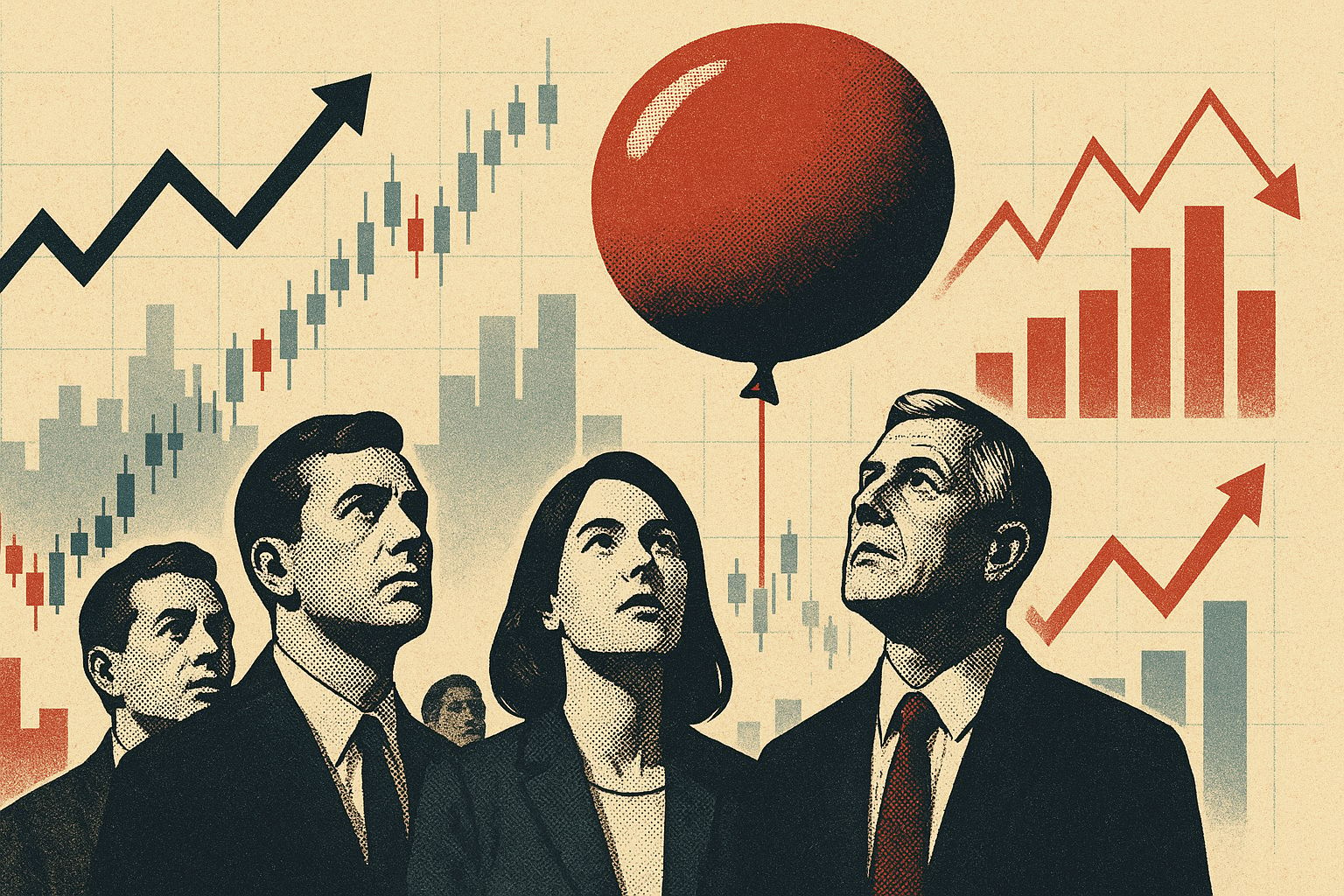Good morning, investors. Stocks hit new highs across the board on Friday after the inflation report came in cooler than expected once again. But that really wasn’t so surprising — the S&P 500 has now touched a fresh record after four of the last six CPI releases.
We enter this week with a Fed rate cut coming Wednesday, a US-China trade deal potentially Thursday, and a slate a Magnificent 7 earnings expected to beat expectations.
💡Reader note: Our team works hard to deliver the best markets newsletter in the world every single day. Help us make it better by taking this 2-minute survey.
Tech dominance in charts
The artificial intelligence boom has put the world on notice that technology is eating the world.
Speculative bets on AI have raised concerns about a speculative bubble, yet the companies leading the charge like Nvidia, Meta and the other Magnificent 7 giants continue to report record cash flows and profits.
Just because today’s tech dominance resembles that of the dot-com era doesn’t mean AI is something destined to pop — even if there are instances of financial wizardry afoot.
The data point to a structural shift into a more productive era built on new technology and underpinned by gobs of cash and resilient fundamentals.
This is illustrated by the Nasdaq-to-Dow ratio, which shows how markets fluctuate between real economy stocks and technology.
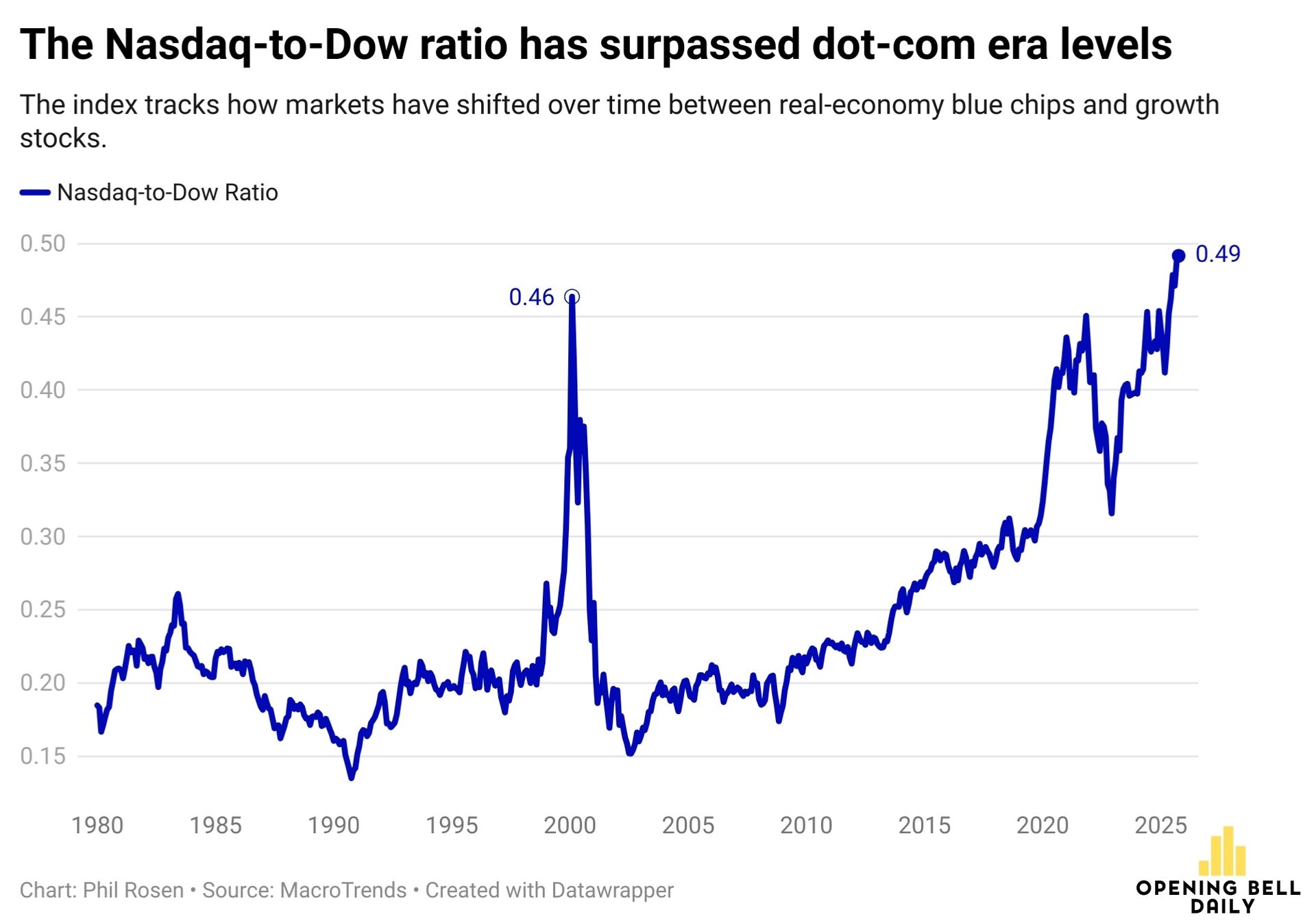
Some will use this same chart as justification for a bubble.
But look how violently the index spiked and collapsed in 2000.
The recent, more gradual climb started in the early 2010s as earnings and margins climbed with stock prices.
Bubbles pop when technology fails to monetize. The companies pushing AI forward are the most profitable businesses in history and help drive real productivity gains.
Meanwhile, the S&P 500’s P/E ratio remains well below dot-com levels.
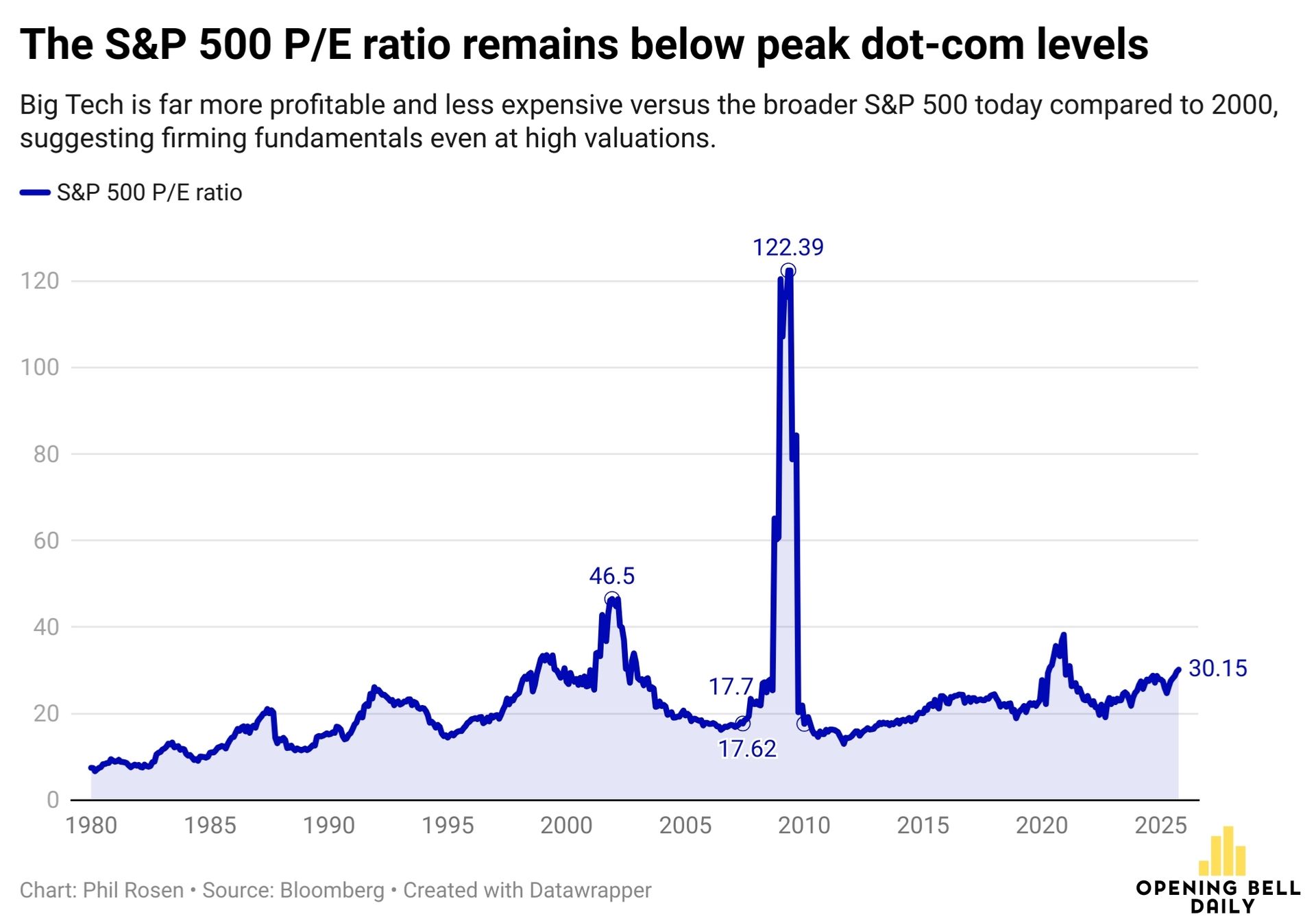
That, too, serves as a reminder that Big Tech today is more profitable and less expensive relative to the broader market than it was two decades ago.
The same narrative holds when you zoom in on a company level.
Cisco and Oracle once traded at more than 120x forward earnings, while names like Nvidia and Apple today hover at about one-quarter of that.
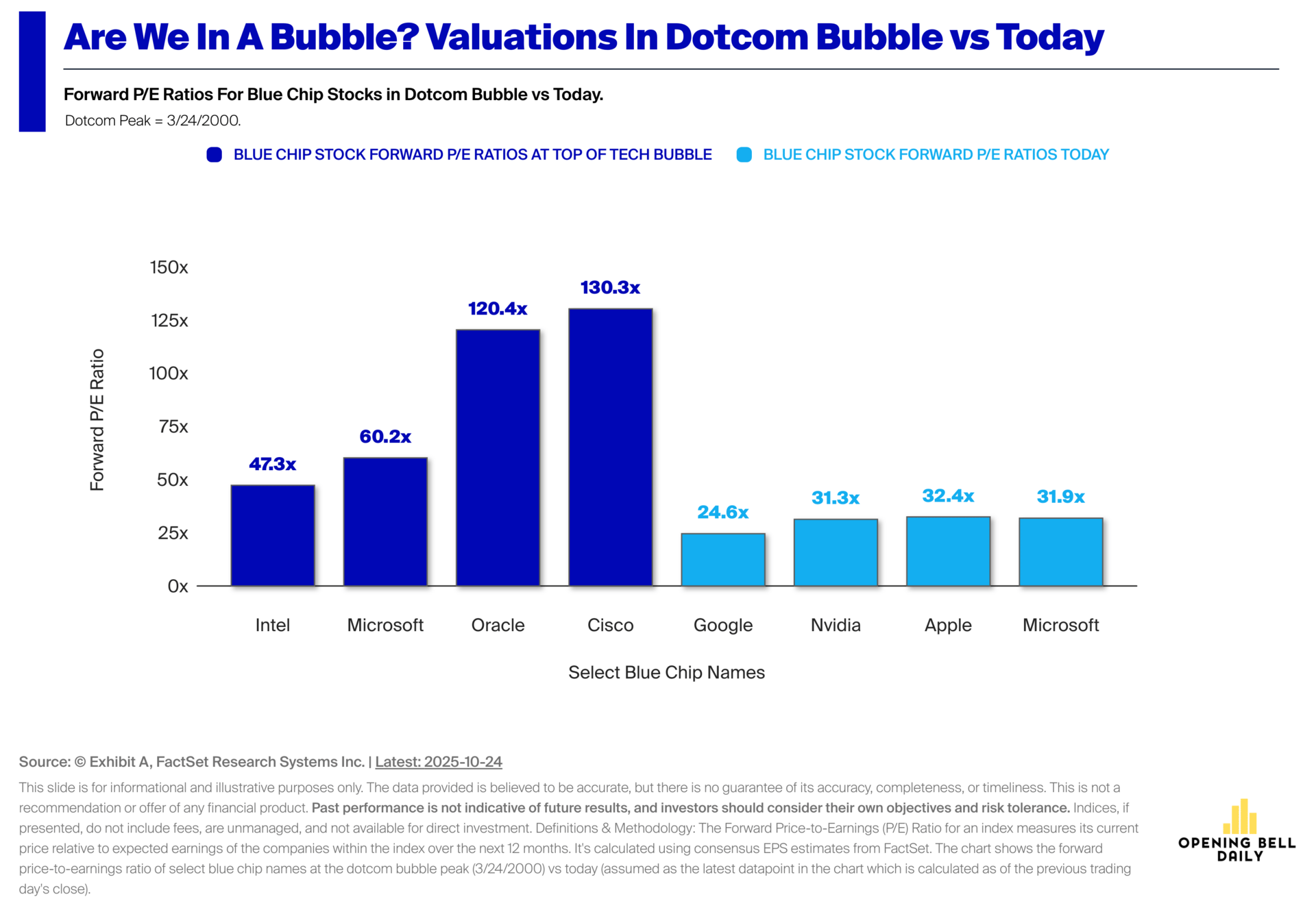
Valuations then and now are not in the same stratosphere (Chart courtesy of Exhibit A)
In the late 1990s, investors paid infinite multiples to own shares in companies with no profits.
In 2025, they are arguable paying a discounted rate for dominant firms that have been generating meaningful returns for years.
Market snapshot
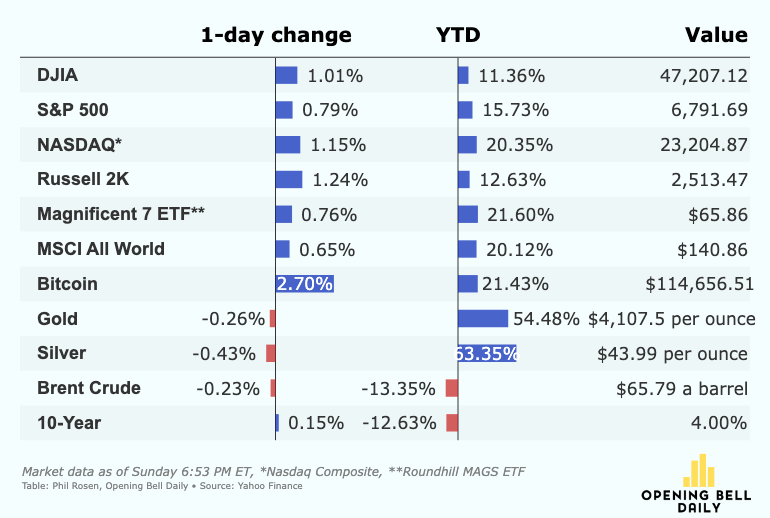
Like Moneyball for Stocks
The data that actually moves markets:
Congressional Trades: Pelosi up 178% on TEM options
Reddit Sentiment: 3,968% increase in DOOR mentions before 530% in gains
Plus hiring data, web traffic, and employee outlook
While you analyze earnings reports, professionals track alternative data.
What if you had access to all of it?
Every week, AltIndex’s AI model factors millions of alt data points into its stock picks.
We’ve teamed up with them to give our readers free access for a limited time.
The next big winner is already moving.
Past performance does not guarantee future results. Investing involves risk including possible loss of principal.
Elsewhere
🤝President Trump reached more trade deals. He signed agreements with Thailand, Malaysia, Cambodia and Vietnam over the weekend, with Southeast Asia expected to play a bigger role in US critical minerals supply. (Reuters)
🇨🇳 Optimism is rising for President Trump’s meeting with China. He’s set to meet with China’s President Xi on Thursday in South Korea. The two sides reportedly made progress toward a new deal this weekend, with Scott Bessent saying Sunday they’ve reached a “substantial framework” that will avoid a tariff hike on China. (Yahoo Finance)
📈 Non-US stocks having a stellar year. While the S&P 500 keeps breaking records, international benchmarks are hitting all-time highs of their own, with the MSCI Al World Index returning more than 25%. Part of that is due to the weakening US dollar. (WSJ)
📨 What C-Suites are reading: Semafor Business, a twice-weekly briefing, brings original Wall Street scoops and exclusive interviews straight to your inbox. It's the perfect addition to your news digest. Sign up free here.
Rapid-fire
President Trump said he’s imposing an additional 10% tariff on Canada after a misleading Reagan ad (CNBC)
Sanctioned Russian oil will still find ways to flow to customers (WSJ)
Money managers see stocks climbing through 2026 in a new poll (Barron’s)
The AI era is turning this old technology stock into a multi-year compounder (Best Ideas Club)
Remembering my first cancelled radio interview four years ago (Blog)
Suspects in the Louvre jewel heist were arrested in Paris (CNBC)
Companies that added “.com” to their names during the internet boom added an average 74% in stock price the week after the announcement (Link)
On this day
🗓October 27, 1997: A mini market crash sent the Dow falling 7% and triggered market “circuit breakers” for the first time, initially spurred by volatility and fears coming out of Asian markets.
Last thing
About me
📰 I’m Phil Rosen, co-founder of Opening Bell Daily. I’ve published books, lived on three continents, and won awards for my journalism, which has appeared in Business Insider, Fortune, Yahoo Finance, Bloomberg and Inc. Magazine.
I write our flagship newsletter to prepare you for each trading day — unpacking markets, economic data and Wall Street with analysis you won’t find anywhere else.
Feedback? Reply to this email, ping me on X @philrosenn, or write me directly at [email protected].

